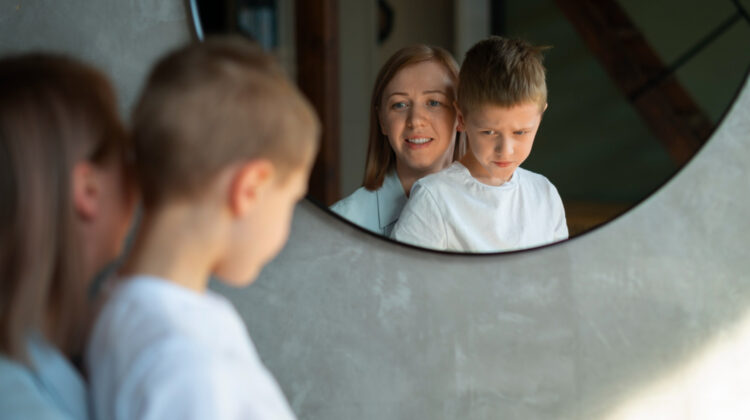
Children tend to mispronounce words more often than not. This is something we find adorable, especially when they first start to speak. These speech imperfections and mispronunciations are expected when your child is a toddler. As a child grows and develops, they should outgrow these issues.
However, if the time for school comes and these speech problems continue, it’s probably time for an intervention.
Lisping, for example, is the most common speech disorder noticeable in young children. Lisp is a disorder that causes difficulties with pronouncing consonants. For example, most kids have a difficult time pronouncing the “s” sound.
With that said, let’s find out how you can help your child overcome lisp problems.
Different Types of Lisp
There are four common types of lisp, and they include lateral, palatal, dentalized, and interdental.
A lateral lisp happens when air travels out of either side of the tongue. This produces a slushy-sounding “s” and “z” sounds.
Palatal lisp happens when a child tries to make “s” and “z” sounds and their tongue touches the soft palate.
Dentalized lisp, on the other hand, occurs when a child’s tongue touches their teeth while producing the “s” and “z” sounds.
The last type is the interdental or frontal lisp, which occurs when a child’s tongue pushes through the front teeth causing them to create a “th” sound instead of an “s” or “z” sound.
Reasons Why Lisps Occur
Lisps are very common speech disorders in children and there are many reasons why they happen. In the early childhood development, a lisp is normal. However, if it continues past the age of four and a half, you should seek professional help. Keep in mind that the longer you wait, the harder it will be to correct it.
One of the most common causes of lisps is dental problems. They can be caused by jaw misalignment, overbites, and narrow dental arches as well as anatomical factors, such as an enlarged tongue.
7 tips to help your child correct lisping
Correcting a speech lisp is possible. With the articulation exercises, you and professionals from the child care centre can help your child correct the lisp. Here are some tips and exercises that most speech therapists recommend.
1. Focus on tongue placement
You should know that tongue placement affects the lisp directly. That’s the main reason why you need to make your child aware of the placement of their tongue when trying to make some sounds.
For example, if the child’s tongue presses forward to their front teeth, just as in the case of a dentalized lisp, you should help them practice tipping their tongue lower while practicing their “s” or “z” sounds.
2. Elicitation Technique
The exploding “t” sound or the popping tire game are all the names for the elicitation technique. It’s a simple exercise that starts with you pronouncing 4 consecutive “t” sounds followed by the “s” sound and then encouraging your child to repeat it.
The “s” sound should be prolonged. It should look something like this – /t/ /t/ /t/ /t/ /sssssss/.
Show your child how their tongue should stay behind their teeth when making the “s” sound. Once they get the hang of this exercise they can move to others.
3. Straw drinking

Drinking through the straw is also a great exercise that can contribute to the correction of a lisp. This doesn’t mean that using a straw can cure the lisp, but it can help your child become aware of tongue placement needed during different exercises. Drinking from the straw can force the tongue to retract instead of push forward.
4. Practice words with initial, medial, and final consonants
If your child has trouble saying the “s” sound, they have an interdental lisp. In this case, you should help them practice words that have the initial “s”. Then move on to words that have “s” in the middle, and then words that have the “s” at the end.
For example, you can make a list of those words. For initial “s” words such as sun, soup, say, see, sad, and so on. For middle “s”, words that you can include are pencil, glasses, castle, whistle, etc. And for final “s”, you can use ice, vase, base, kiss, and a few others.
5. Practice butterfly technique
The butterfly technique or procedure is a very popular tongue exercise and many speech therapists highly recommend it. The goal of this technique is to help kids create the sounds “s” and “z” correctly.
Start the exercise in front of the mirror by telling your child to imagine that their tongue is a butterfly. The center of the tongue is the body and the sides are wings. Maybe you can use some sort of visual representation to make it easy on the child. A butterfly made of pipe cleaners, for example.
Tell the child to place the sides of the tongue or the wings on the sides of their teeth. The best way to get into this position is by saying the sound “i” like in the word “tin”. The center of the tongue or butterfly’s body, will be slightly dipped.
When producing the sounds “s” and “z” the air should flow over the center of the tongue.
Standing in front of the mirror and doing this will help your child figure out how to do this better. And then later they can practice on their own.
6. Form sentences
After you’ve practiced words with initial, medial, and final “s”, you can try forming sentences. Use the same words you used to practice the “s” sound. You can use the same word list and try making silly sentences with your child to make it more interesting.
Use lisp practice sentences such as “The cats are wearing hats” and “Sally is sitting in the soup” to help them practice the “s” and “z” sounds in the sentence.
7. Transition to conversation
Once you notice that your child is pronouncing “s” and “z” sounds correctly, you can encourage conversation. During conversations, if you notice that your child’s “s” and “z” sounds slip, don’t interrupt them mid-conversation.
Don’t worry about these slips, bad speech days can happen and they are normal. And remember that it’s all about the practice. Practice and patience will help you help your child correct their lisp.
Conclusion
Remember that lisp is a common speech disorder in children. If you notice that your child is lisping, don’t panic. They may grow out of this lisp.
And if they don’t, if they are still lisping past the age of 4, you should consult with a speech therapist. Remember to be patient and to practice regularly with your child.